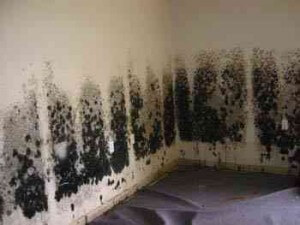Crawl Space Mold and What to Do About It
Crawl space mold cleaning San Francisco
Have you noticed an earthy, musty odor in your home? If so, you may have a mold problem, and it could be in the crawl space under the house. Regular inspection of the crawl space is important because these spaces are very susceptible to mold, which tends to flourish in damp, humid places. A properly sealed and conditioned crawl space will not only prevent mold buildup and rot, but also make your home more energy efficient, and avert problems with pests such as termites, carpenter ants and rodents that can destroy wood and insulation.
If there is a very high level of mold in the crawl space, airborne spores — some as tiny as one micron in diameter — can travel upward to the rest of the building, rising with the air currents. There are many different types of mold, and some release mycotoxins that are extremely harmful. These toxins can cause severe allergic reactions in some people, and some may even be carcinogenic.
The most toxic species of mold are S. chartarum and S. chlorohalonata, better known as black mold. Exposure to these spores from inhalation, ingestion or skin contact can lead to a wide range of health problems including headaches, rashes, coughing, eye and throat irritation, fever, and fatigue, and in more serious cases nausea, vomiting, lung damage and internal bleeding.

Black Mold
Preventive Measures
The best way to deal with crawl space mold is to prevent it from growing in the first place. Mold needs the right environmental conditions to grow. One important factor is humidity. If the relative humidity in the crawl space is greater than 55%, fungus may easily take hold there.
In the past, houses were built with crawl space vents which theoretically would allow moisture to escape. However, it was found that this cross-ventilation was generally inadequate and instead increased the level of moisture and humidity in the crawl space. Air entering through the vents rises to the upper levels of the home, carrying moisture, dust, and possibly mold spores. Therefore, crawl spaces should be sealed, conditioned and dehumidified just like the rest of your home.
To seal the crawl space completely, install a heavy-duty 10-mil to 20-mil polyethylene vapor diffusion barrier with fiber reinforcement to block moisture from the soil. Using waterproof tape and overlapping the seams by twelve inches, cover the crawl space floor and walls, leaving a few inches at the top for termite inspection. This barrier will help to reduce humidity in the crawl space and prevent invasions of termites and other destructive pests.
Another contributing factor to mold growth is too much moisture. It is therefore vital to fix any conditions that are causing the crawl space to be wet, such as improper roof gutter drainage, ineffective foundation drainage systems or plumbing problems causing water to leak into the space.
Mold Removal
What if you already have mold in your home’s crawl space? Entering crawl spaces can be extremely hazardous due to danger of electrical shock, structural collapse, chemical or mold contamination, pests such as rodents, snakes, or hornets, and debris such as splinters, protruding nails or damaged insulation. Proper containment is also necessary to prevent mold spores from spreading to the rest of the home during cleaning. For these reasons, it is safest to call in mold removal professionals to deal with your crawl space mold.
If the moldy area is more than 30 square feet or contains highly toxic black mold, remediation by specialists is strongly recommended. Moldy insulation may need to be removed, and the whole crawl space should be thoroughly inspected to determine the underlying causes of the mold problem.
